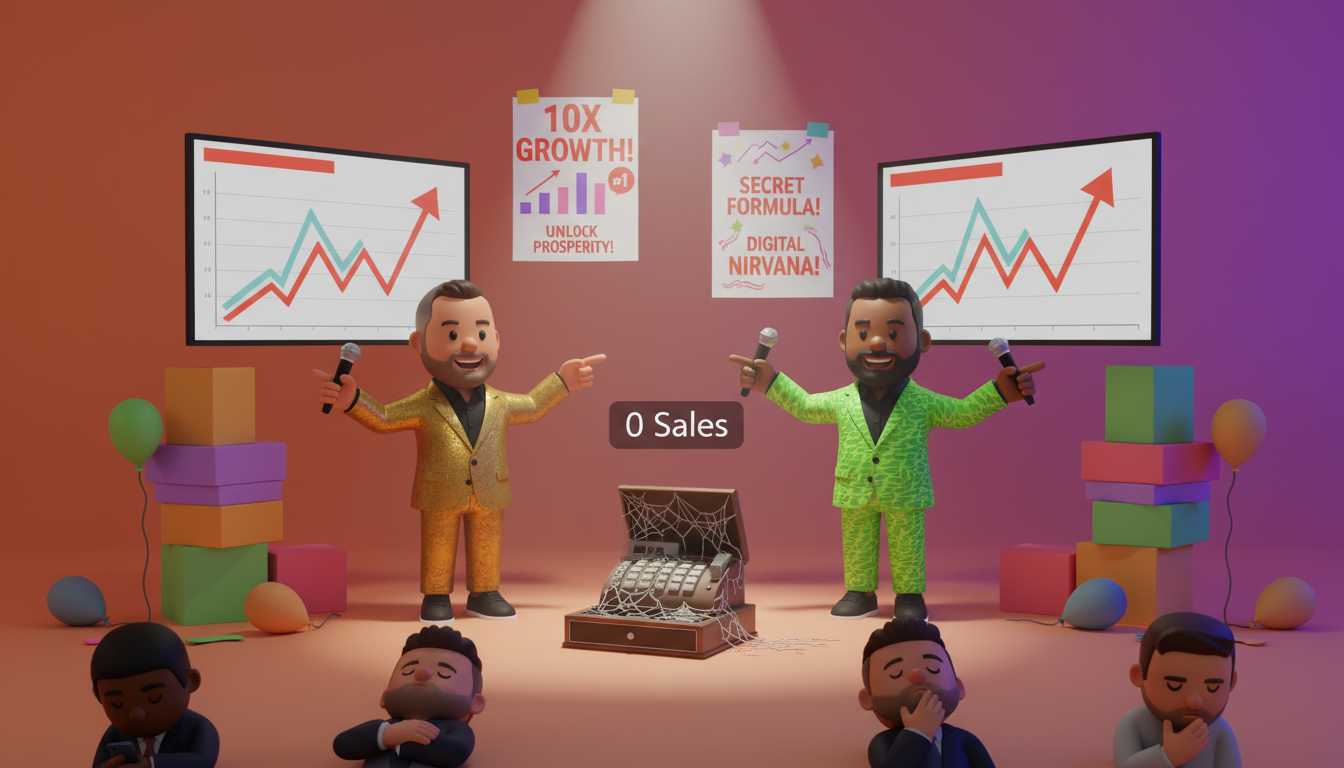Writing articles that rank page 1 on Google is a bit more complicated than XYZ, so I’ve decided to do something fun in this one…
Not only will I teach you step by step how to write high-ranking articles, but I’m also going to format this post in a way that helps you visualise how you should be writing SEO optimised articles, so you can actually SEE it, rather than just reading it.
Practice what you preach, yanno?
So before we begin, you may notice some of that funky-looking formatting already. This is done on purpose. It’s how I’ll visualise the techniques I’m going to teach you – and as you make your way through the article, each bit of funky formatting will be explained to help you better understand how you can write articles that rank page 1 on Google.
Here’s what you’ll learn:
- Understanding Keywords (The Foundation of Every High-Ranking Article)
- How to Find the Right Keywords for Your Article
- How To Structure A High-Ranking Article For SEO
- Place Keywords Intentionally – Not Excessively
- Optimise Meta Tags & URL Structure
- Use Internal and External Links Strategically
- More Ranking Factors to Strengthen Your Article’s Performance
- How To Build A Content Marketing Strategy For Your Business
H2: Understanding Keywords (The Foundation of Every High-Ranking Article)
Before a single word hits the page, you have to know what keywords are, which keywords you’re going to be targeting in your article, and the search intent behind those keywords. Get this part wrong, and your articles will never rank on page 1 of Google. It’s arguable one of the most important ranking factors in all of SEO copywriting.
H3: What Keywords Actually Are (And Why They Matter)
Keywords are the bridge between what people search and what your content delivers. They tell search engines what your page is about, which then influences visibility, traffic, and how relevant your content appears to Google.
Every strong article starts with a clear keyword strategy. For example, throughout the duration of this post, I have added different formatting elements to the different keywords I am using to rank the article. You should be able to see exactly what keywords I’m targeting, how often I’m using them, and how you can copy my style in your own content marketing strategy to start writing articles that rank page 1 on Google.
H3: The Different Types of Keywords
As previously mentioned, there are different types of keywords. And throughout this article, I have highlighted each different type of keyword that I’ve used to help you visualise the strategy.
H4: Short-tail keywords
Short-tail keywords are broad, high-volume terms (e.g. “Content Strategy”). They are highly competitive and less targeted than long-tail keywords. Only the highest authority websites can rank for short-tail keywords, so it’s always best to avoid targeting them, and instead use them inside long-tail keywords to rank for more specific queries.
H4: Long-tail keywords
Long-tail keywords are more specific phrases (e.g. “How to build an effective content strategy”). They have lower search volume, but much higher intent. And often, the more specific you get with your keywords, the less competition you’ll have trying to rank for them.
H4: Primary & Secondary Keywords
Primary and secondary keywords aren’t technically a “type” of keyword – but knowing the difference matters.
The primary keyword is the main phrase you’re trying to rank for.
In this article, I’ve chosen a very specific long-tail keyword: “How to write articles that rank page 1 on Google.”
You’ll see this keyword repeated throughout the piece.
Each time it appears, I’ve bolded, italicised, and underlined it so you can clearly spot:
- Where the primary keyword is placed
- What it looks like in context
- How often it’s repeated
Secondary keywords support the primary one. For example: “Writing high-ranking articles.”
These are simply variations of the main keyword – phrased differently but still relevant.
Throughout this article, I’ve italicised and underlined every secondary keyword. This way, you can visually track how they’re used to add depth and context to the primary keyword.
H4: LSI & semantic keywords
LSI (Latent Semantic Indexing) keywords are related phrases that help Google understand the context of your article (e.g. “SEO Copywriting”, “Keyword Research”).
Try not to confuse LSI keywords with secondary keywords. LSI keywords are related phrases. Secondary keywords are variations of the primary keyword. I’ve Italicsed all LSI keywords up to this point to help you visualise where these keywords are and how you can copy the strategy yourself.
H4: Branded vs non-branded keywords
Branded vs non-branded keywords are whether your name appears in the search query or not. (e.g. “Content Strategy” vs “The Legacy Room Content Strategy”).
These are great if you’re trying to rank for your brands name, or even another brand name, but not massively important for SEO if you’re looking to attract cold leads.
H4: Transactional vs informational vs navigational
These are the three core search intent categories and they shape how you write your article just as much as what you write.
- Transactional: The reader wants to do something – usually buy, book, sign up, or request a service.
Think: “cheap skip hire Preston” or “buy running shoes online.”
Your copy should guide them to take action quickly.
- Informational: The reader wants to learn something.
Think: “how to write SEO articles” or “what size skip do I need.”
Your content should teach, explain, and build trust.
- Navigational: The reader is looking for a specific brand, site, or page.
Think: “SkipPrice login” or “The Legacy Room blog.”
Your goal here is to make sure they land exactly where they want to go.
We’ll cover search intent a little more in depth later.
H4: Geo-Targeted Keywords
Geo-targeted keywords are search terms that include a location – and they’re crucial if your content or service is tied to a specific area.
For example, instead of just targeting your primary keyword “how to write articles that rank page 1 on Google”, you could localise it with geo-targeted keywords by adding a location:
- “how to write articles that rank page 1 on Google in the UK”
- “how to write articles that rank page 1 on Google for London businesses”
Geo-targeted keywords help you pull in people who actually matter to your business, not random traffic from halfway across the world. They also give you a competitive edge, since fewer brands fight over localised search terms. And as you keep showing up for the same region again and again, it becomes much easier to build trust, authority, and visibility in that specific area.
If your audience lives somewhere specific, your keywords should too.
H3: How to Find the Right Keywords for Your Article
Finding the right keywords for your article can be a bit of a pain, but it’s always best to start with the topic, then map out what people actually search for.
Take SEO, for example. I wanted to post something that helps people write articles that rank page 1 on Google. So I asked myself, “What are people searching for?” And, as you’ve probably figured out, I landed on the title of this post.
And there’s more than 1 way to find winning keywords. You can “wing it”, like I usually do, using my out-of-this world ability to automatically know what keyword to use, or you can be more sensible and use tools like Ahrefs, SEMrush, or Google Keyword Planner to spot demand.
Another funky trick is to look at “People Also Ask” and “Related Searches” in Google for inspiration. These are literally queries related to your topic that people are actively searching for. I personally use the “People Also Ask” section to write all my articles, and I’ve ranked page 1 for more keywords than a marketer says ‘it depends,’ so it’s entirely up to you.
And finally, make sure you prioritise keywords you can realistically rank for (balance search volume with competition). If you’re trying to hit keywords like “Sports T-Shirts” or “Running Shoes,” you’re competing with adidas, Nike, and all the other goliaths dominating the SERP. If you actually want a chance at ranking, get more specific, and use tools to find winning keywords.
H3: How to Use Primary, Secondary & Supporting Keywords
H4: 1.) Primary Keywords
The primary keyword is the main search term your article is built around. It goes in the title of the page, the H1 heading, and the intro of the article. It’s also best practice to drip the primary keyword naturally throughout the article, like you can see in this post. But more on that later.
H4: 2.) Secondary keywords
As mentioned above, secondary keywords are related variations that support the primary term. Spread them naturally through the page.
H4: 3.) Supporting Keywords
Supporting keywords help build context and depth on your page (e.g., FAQs, semantic terms). Like secondary keywords, make sure to spread them naturally throughout your content.
Or, just write your article naturally, like me. I’ve found that the more natural you write, the better your keyword placement is – as long as you’re writing your article around your primary keyword with correct search intent in mind.
H3: Keyword Density and Placement
When it comes to writing SEO optimised articles, keyword density isn’t about hitting some magic percentage. It’s about sounding human. The sweet spot is weaving your primary keyword in naturally – early on in the title, H1, and those crucial first 100 words. From there, let your secondary keywords flow where they make sense.
Think of it like seasoning food. Too little and it’s bland. Too much and you ruin the flavour. Prioritise readability first, because if it sounds forced to you, it’ll sound worse to your reader… and Google will know it.
H3: Search Intent Comes First, Keywords Come Second
A keyword on its own is just a bunch of letters. It only becomes powerful when you understand why someone’s typing it into Google in the first place. Before writing a single line, figure out their goal. Are they trying to learn something? Compare their options? Make a purchase?
Once you’ve nailed the intent, angle your content to meet it head-on. That’s the real difference between writing random articles and how to write articles that rank page 1 on Google.
H2: How To Structure A High-Ranking Article For SEO
Congrats, you’re now a keyword wizard. But keywords will only get you so far.
Articles need to be structured correctly so that people and Google can read them. This is known as “structured data” in SEO, and includes things like “Title Tags”, “Keywords”, “Meta Tags”, “Linking”, “Readability”, and many more variables.
This compilation of SEO best practices is what makes the difference between an article that tanks and an article that ranks page 1 on Google.
So let’s break down how to structure a high-ranking article for SEO:
H3: Start With a Strong, Keyword-Focused Title Tag
The “Title Tag” is the blue clickable headline that appears on the search engine results page (SERP), and can be found as seen in the image below on WordPress:

The primary keyword should appear as close to the start of the title as possible, or even better (what I like to do), is have the entire title BE the primary keyword. This helps stay focused on long-tail keywords with decent volume and less competition.
It’s also best practice to keep your post title under 60 characters to avoid truncation in search results.
H3: Use One Clear H1 (and Only One)
The H1 is the page headline – it should match or closely mirror the title tag. For my posts, I have a title block in my theme builder that automatically fills in the title as the page H1. Scroll back to the top of the page and you’ll see it.
Keep it punchy and clear to set the context for both users and search engines, and make sure it contains your main keyword naturally.
H3: Build Logical H2s for Core Sections
H2s should break down the main topic into clear subtopics. Each H2 should ideally map to a related keyword or common search query. Think: “chapters” in your article’s story.
The best way to figure out the best H2’s for your article is to follow another great practice that I like to do. I call it the “here’s what to expect” into technique, which includes all the H2s and jump links to the related article section.
You’ll also notice that I’ve purposefully left “H2”, “H3” etc. in front of all my headers. This goes back to the little formatting game I mentioned at the start. You can see how I structure title tags in this article and you can copy the formula yourself.
H3: Use H3s & H4s for Supporting Detail
H3s should expand on your H2s. For example, if the H1 of your article is “How to Write Articles That Rank Page 1 on Google,” and your top H2 is “Understanding Keywords,” then your H3s and H4s should support that parent H2.
For instance:
H3: Different Types of Keywords → H4: LSI Keywords, Long-Tail Keywords, etc.
H4s work best for lists, examples, or niche details within each sub-section. Keep all headers readable and conversational, not stiff or robotic. And don’t be shy about using them. Clear, structured headers make your content easier to read and help Google understand your article more effectively.
H3: Place Keywords Intentionally – Not Excessively
When you’re learning how to write articles that rank page 1 on Google, keywords are your compass. But like any good map, you don’t need to draw every landmark twice. Place your primary keyword in the title, H1, and early in the first paragraph so Google (and your reader) know exactly what the page is about.
Sprinkle your secondary keywords naturally throughout the content. Don’t force them — this isn’t 2010 SEO. Use semantic variations (LSI keywords) to give Google the full picture of your topic. If it reads smoothly out loud, you’re probably doing it right.
H3: Optimise Meta Tags & URL Structure
Keep your meta description under 155 characters, include the primary keyword, and give people a reason to click. Think of it as a mini sales pitch for your content. You can find the input for the meta description in the image below, and remember, the more enticing your meta, the more clicks you’ll get, and the more Google will trust you:

Your URL should be short, clean, and keyword-rich — something like /how-to-write-high-ranking-articles/ works beautifully for this post. No messy numbers, no filler words. Just clarity.
You can find the URL just above the meta input where it says “Slug.”
H3: Use Internal and External Links Strategically
Internal links guide readers deeper into your world. Use them to connect relevant topics, build authority, and reduce bounce rates. External links should point to credible sources, backing up your points and giving Google extra context.
And please… no more “click here” anchor text. Be descriptive. Tell the reader (and Google) exactly what to expect when they click.
For example: If you want to learn how to write articles that rank page 1 on Google, you might also want to learn How To Build A Content Marketing Strategy For Your Website as well.
H3: Use Lists, Short Paragraphs & Visual Breaks
Big walls of text make people run for the hills. Keep paragraphs short – three to four lines max. Use lists or numbered steps to break up the pace. Also, remember to use H4s & H5s for lists and examples. This keeps your article structured without negatively impacting SEO. Too many people add bullets to their p-tag text, but it doesn’t work for SEO.
H3: Optimise Images and Alt Text
A slow page kills rankings. Compress your images so they load fast, and use descriptive, keyword-aligned alt text to give Google extra context. If captions add clarity or value, include them too. Every element on the page should have a job to do.
You can find the image alt text on WordPress in the image below:

H3: End With a Clear CTA or Next Step
Every high-performing article ends with purpose. Guide your reader to take action, whether that’s exploring a service, downloading a resource, or diving into the next article.
Reinforce the value they’ve just received and give them a natural next step. Not only does this build trust, but it also improves engagement signals… which gives your rankings an extra nudge in the right direction.
For example, get in touch with us and we’ll write keyword rich, high-ranking articles for you.
H2: More Ranking Factors to Strengthen Your Article’s Performance
Don’t mistake this section for “optional SEO choices.” Because the practices outlined below are just as important as everything else in the blueprint.
H3: Maintain a Clear, Logical Flow
Google rewards content that’s easy to follow. A well-structured article should lead readers from one idea to the next like stepping stones across a stream – no sudden jumps, no scattered tangents. Each section should build on the one before it, guiding the reader toward a clear outcome. When your flow makes sense to humans, it makes sense to search engines too.
Start with the msot important information at the top, and slowly work your way down in order of importance.
H3: Focus on Quality Over Word Count
More words don’t mean better rankings. What matters is delivering value that meets – or beats – what’s already ranking. Study the top results for your keyword. If their content answers the basics, yours should go deeper. Add context, clarity, and angles they missed. Show Google why your article deserves the top spot.
H3: Align with Search Intent at Every Step
Even a perfectly structured article can fall flat if it doesn’t match what searchers want. Make sure each section answers real questions or solves real problems tied to the keyword’s intent. The clearer the match, the higher your chances of ranking.
H3: Keep It Fresh and Relevant
Search engines love current, accurate information. Outdated content can drag your rankings down. Revisit your articles regularly – update examples, refresh stats, refine sections – and make sure your piece remains the most useful and relevant resource available.
H3: Earn Trust With Expertise and Credibility
When you’re competing for page one, trust is everything. Cite credible sources, show expertise, and avoid filler. The more authoritative your article feels, the more weight it carries with both readers and Google.
H2: How To Build A Content Marketing Strategy For Your Business
Now that you know how to write articles that rank page 1 on Google, it’s time to zoom out. Articles on their own are powerful – but articles that work together as part of a bigger strategy is where real growth happens.
A content marketing strategy gives those articles a purpose. It connects the dots between SEO, lead generation, brand building, and conversion. It makes sure every word you write moves the right people toward the right action.
Because ranking isn’t the finish line. It’s the starting gun.
If you want to learn how to build a bulletproof content strategy for your website, check out this useful article. Or, if you’d rather skip the trial and error, get in touch with us here and we’ll help you map it out for free.

















 Boost open rates
Boost open rates